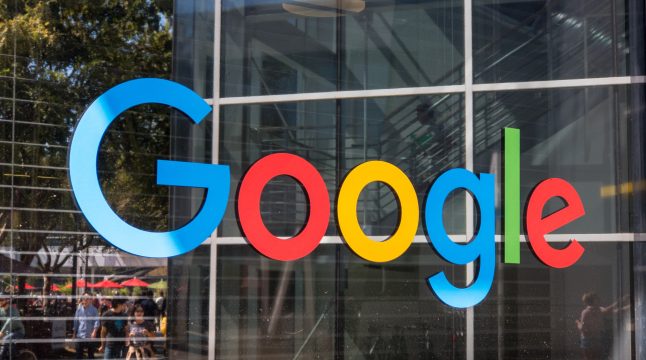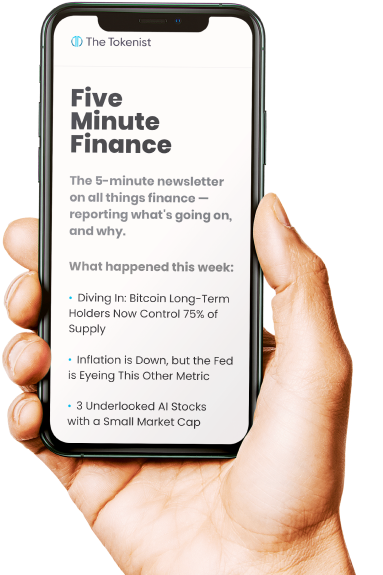
Alphabet’s Paradox: Why Google’s Decay Strengthens its Dominance
Year-to-date, Alphabet (NASDAQ: GOOGL) stock is the most performing one of the Mag 7 stocks, slightly outpacing even Nvidia at 41% vs 40% respectively. In fact, Google investors are even ahead of Bitcoin enthusiasts with double the YTD gains.
With a trailing twelve months price-to-earnings ratio of 28.48, GOOGL stock is still below the 31.43 forward P/E ratio of the information technology sector. For comparison, Microsoft has a TTM P/E ratio of 40.This valuation gap suggests further upside potential as Alphabet’s earnings momentum continues to outpace its sector peers. Further fueled by accelerating AI monetization, cloud gains and resilient ad growth, GOOGL could extend its leadership run into 2026.
Let’s examine what makes GOOGL such a special investment opportunity.
The Control Premium: Why Alphabet’s Decay Makes It a Stronger Investment
Over the years, it has become quite apparent that Google’s search engine has suffered drastic degradation. Even knowing exact info to look up, the search is likely to fail, overridden by sponsored links and mainstream chokepoints of information. This failure is even more likely if the information needed in some way collides with ideological boundaries of permissible opinion.
Likewise for the world’s largest video sharing platform – YouTube – its search capability is exceptionally poor. YouTube’s algorithm even lost the capacity to retain which videos users had already watched. Yet, all of these downgrades are extremely bullish.
Because the primary purpose of Alphabet is to serve as the world’s chokepoint, outside of China’s Great Firewall, as the IT extension of USG hegemony. In other words, the company’s valuation stems from control. The more centralized and indispensable its digital infrastructure becomes, the less its core business relies on quality user experience.
And given that most users follow the line of least resistance, neglecting alternatives in the process, Google’s inefficiencies ironically reinforce its dominance by narrowing discovery into monetizable and politically safe channels.
Understanding Alphabet’s Core: Control as a Service (CaaS)
With Google’s true purpose in mind – control – it is easy to see why the company’s AI would tell users that Elon Musk’s Department of Governance and Efficiency (DOGE) is fictional. Likewise, it’s easy to see why Gemini’s image generator would systematically substitute people of European descent with sub-Saharans, which even Elon Musk pointed out.
The most recent overview of large language models (LLMs) reflected such ideological setups, with the exception of Elon Musk’s Grock 4 Fast. What all of this means for investors is that Google’s usability decay is not weakness, but a sign of maturity. It is monopoly behavior emerging from a position of entrenched dominance
This position is likely to strengthen as USG evolves from serving the public to selling access to the system itself. With the age of AI models now replacing “fact-checkers”, Google’s position is even more bullish. Outside of Grok, competing AI models clearly amplify Google’s underlying narratives, as they are trained on the company’s informational hegemony – reflecting USG hegemony.
In short, investors should understand Google as having an invisible moat – an entire digital ecosystem funneling billions into predictable behavioral pathways that are easier to model, price and manipulate.
Join our Telegram group and never miss a breaking digital asset story.
Understanding Alphabet’s Core: Control as a Service (CaaS)
To enhance its AI reach, Alphabet committed to around $85 billion in data center infrastructure efforts. The most recent deal would pour $15 billion into India’s southern state of Andhra Pradesh over the next five years. Leveraging vast quantities of data on the internet for training, Google is best positioned to have the most compelling text-to-video generation (Veo 3) with Gemini 2.5 Flash already integrating real-time audio dialog generation.
Combined with AI Overview replacing direct engagement with websites, Alphabet has a ready-to-go ecosystem for it to seamlessly integrate Gemini’s multi-modal features. In terms of intelligence capability to token pricing efficiency, Gemini 2.5 Flash is adjacent to the most attractive quadrant.
While Gemini 2.5 Pro (green) is close to Grok 4 performance, Gemini 2.5 Flash (green) is on the lower end of token cost. Image credit: Artificial Analysis.
Following April’s Google Cloud Next 2025 conference, it became apparent that the company is attempting to fill its enterprise service gap with Cloud WAN, as the next big push for ecosystem entanglement. In Q2 earnings, Google Cloud was the fastest growing segment, outpacing both Amazon’s AWS and Microsoft’s Azure, at 32% year-over-year revenue growth to $13.6 billion.
The push to bombard YouTube and Google search with ads has also been successful, as the advertising revenue grew 10.4% YoY to $71.34 billion. YouTube ads alone contributed $9.8 billion, growing by an impressive 13% from the year-ago quarter.
It is likely that ad bombardment is a strategy to push users into premium subscriptions. This too bore fruit, as Google subscriptions revenue increased by 20.3% to $11.2 billion.
Monetizing the Information Flow
With an understanding that Alphabet’s true core is CaaS, it is safe to say that GOOGL stock is only to gain more value as AI integrates deeper. This is reflected by Wall Street Journal’s forecasting, as 53 analysts are bullish, with 12 rating GOOGL stock as “hold”, and zero analysts in the “sell” rating camp.
Nonetheless, new investors should wait for the next stock market correction before diving into GOOGL exposure. That’s because the average GOOGL price target, at $265.57, is now below the current price of $268.43 per share. The bottom outlook is $190, while the ceiling price target for GOOGL stock is $340 per share.
With this in mind, existing Alphabet shareholders should consider locking in profits, depending on the profit range.
Disclaimer: The author does not hold or have a position in any securities discussed in the article. All stock prices were quoted at the time of writing.




